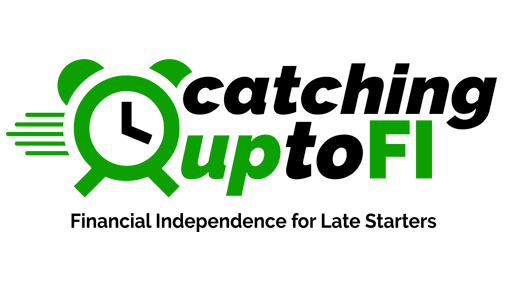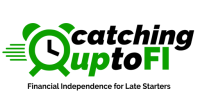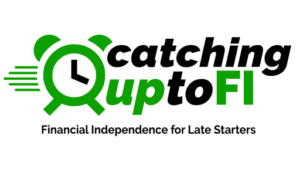At A Glance – Debt Snowball vs Debt Avalanche. These are 2 popular methods of paying off debt. The Snowball method focuses on your debt’s balance – paying off smallest to largest. The Avalanche method focuses on your debt’s interest rate – paying off largest to smallest.
The key to paying off your debt is to make a plan and stick to it. For most people, making a plan includes creating a budget and sticking to it. Evaluate where you are spending your money and where you can cut. Paying off your debt is THE most important step you can take to get your money under control. Debt is the enemy of wealth and financial stability.
Debt Snowball Method
This method is simple. You pay your smallest debt first. As fast as you can. When the smallest one is gone you have more money to put toward the next smallest. As you pay off each debt, the snowball gets bigger and more powerful.
Debt Snowball Steps
- Make a list of all your debts except your mortgage. This includes credit cards, car loans, student loans, etc.
- Next to each debt, write down the amount you still owe.
- Number the list in order of smallest balance to largest.
- Pay the minimum amount on all the debts except the smallest one.
- Put every extra dollar you can find on the smallest debt. ( This could be money from a side job, overtime, or by selling something.)
- When the first debt is paid off celebrate your first win!
- Add all the money you were paying on the first debt with the minimum payment of the second debt on the list.
- Celebrate again when the second debt is paid off!
- Rinse and repeat until the last debt is paid. Each time adding the money from the payments on the previous debt.
- Woohoo! You’re Debt Free!
Debt Snowball Example
Let’s look at an example. Joe and Sally want to pay off their debts using the Snowball Method. They start by making a list of all their debts, the balance owed, interest rate, and payment amount. They have two credit cards, two auto loans, and a student loan.
| Creditor | Balance | Rate | Payment |
| Card #1 | 4,400.00 | 13.00% | 50.00 |
| Auto Loan #1 | 3,200.00 | 9.81% | 30.00 |
| Auto Loan #2 | 5,000.00 | 12.00% | 55.00 |
| Card #2 | 9,000.00 | 13.50% | 110.00 |
| Student Loan #1 | 4,900.00 | 4.00% | 25.00 |
| Totals | 26,500.00 | 270.00 |
This next chart shows Joe and Sally’s debts in Snowball payoff order, from smallest to largest balance. You would pay the minimum payment on all debts except Auto Loan #1. Then every dollar they could find would be added to its $30 payment to pay it off ASAP.
| Creditor | Balance | Rate | Payment |
| Auto Loan #1 | 3,200.00 | 9.81% | 30.00 + extra |
| Card #1 | 4,400.00 | 13.00% | 50.00 |
| Student Loan #1 | 4,900.00 | 4.00% | 25.00 |
| Auto Loan #2 | 5,000.00 | 12.00% | 55.00 |
| Card #2 | 9,000.00 | 13.50% | 110.00 |
Snowball Pros and Cons
The advantage (or pro) of the Snowball Method is it gives you a quick psychological boost. Paying off all your debt is not going to be a piece of cake. You didn’t get into debt overnight and you won’t get out overnight. It takes time, discipline, and some sacrifice. The Snowball Method gives you a quick win and helps you feel like you are making headway. This can give you the motivation you need to stick with it.
The disadvantage is the Snowball Method does not take math into consideration. You may pay your first debt off quickly, but that might be a loan with a small interest rate. Meanwhile, the loan with the large interest rate, say your credit card, is treading water and accumulating interest while it waits for you to get to it.
[convertkit form=1993750]
Avalanche Method
The Avalanche Method is similar to the Snowball, but it considers the interest rate instead of loan balance. This method takes math into consideration. By paying off the highest interest rate loan first, you will pay a little less money in the end because you are paying down that higher interest rate loan faster.
Debt Avalanche Steps
- Make a list of all your debts except your mortgage. This includes credit cards, car loans, student loans, etc.
- Next to each debt, write down the interest rate of the loan.
- Number the list in order of largest interest rate to smallest.
- Pay the minimum amount on all the debts except the first one on the list.
- Put every extra dollar you can find on the first debt. ( This could be money from a side job, overtime, or by selling something.)
- When the first debt is paid off celebrate your first win!
- Add all the money you were paying on the first debt with the minimum payment of the second debt on the list.
- Celebrate again when the second debt is paid off!
- Rinse and repeat until the last debt is paid. Each time adding the money from the payments on the previous debt.
- Woohoo! You’re Debt Free!
Debt Avalanche Example
This chart shows Joe and Sally’s debts listed in Avalanche order from highest to smallest interest rate. They would make minimum payments on all except credit card #2. Then every dollar they could find would be added to its $110 payment to pay it off ASAP.
| Creditor | Balance | Rate | Payment |
| Card #2 | 9,000.00 | 13.50% | 110.00 +extra |
| Card #1 | 4,400.00 | 13.00% | 50.00 |
| Auto Loan #2 | 5,000.00 | 12.00% | 55.00 |
| Auto Loan #1 | 3,200.00 | 9.81% | 30.00 |
| Student Loan #1 | 4,900.00 | 4.00% | 25.00 |
Avalanche Pros and Cons
The pro for the Avalanche is you are considering interest rates. You save money as you pay down the loan with the largest interest rate first. As the loan balance decreases, the amount of interest being charged decreases also. In the end, you will pay out less money in interest with the Avalanche Method.
The con for the Avalanche is emotional. The loan on the top of your list may have a large balance and take months or even years to pay off. This can be discouraging to see all your other debt treading water while you work on the one.
Debt Payoff Calculator
There are many online calculators available to help you plan your debt payoff. I’ve linked to a Debt Snowball Calculator by Vertex42. This calculator is easy to use and allows you to compare the Snowball Method and the Avalanche Method. It will tell you how long till you are debt-free and the total amount paid. It is available to download as an Excel sheet or a Google Sheet.
What Does The Bible Say?
God calls us to be good stewards of everything we have. All we have comes from Him and belongs to Him. “…for every animal of the forest is mine, and the cattle on a thousand hills.” Psalm 50:10
Debt enslaves us. When you are in debt, you are trapped. You are chained to the lender. “The rich rule over the poor and the borrower is slave to the lender.” Proverbs 22:7
We are not prepared to join in on God’s plans or opportunities if all our money is spoken for before we even earn it!
Key Takeaway – The Snowball Method and the Avalanche Method are both great ways to pay off your debt. The Snowball Method focuses on the debt balances and the Avalanche focuses on interest rate. Use the method that works best for you.
Assignment – Use the Debt Snowball Calculator to help you determine which method works best for you and start paying down your debt. Then celebrate like crazy when you are debt-free!









